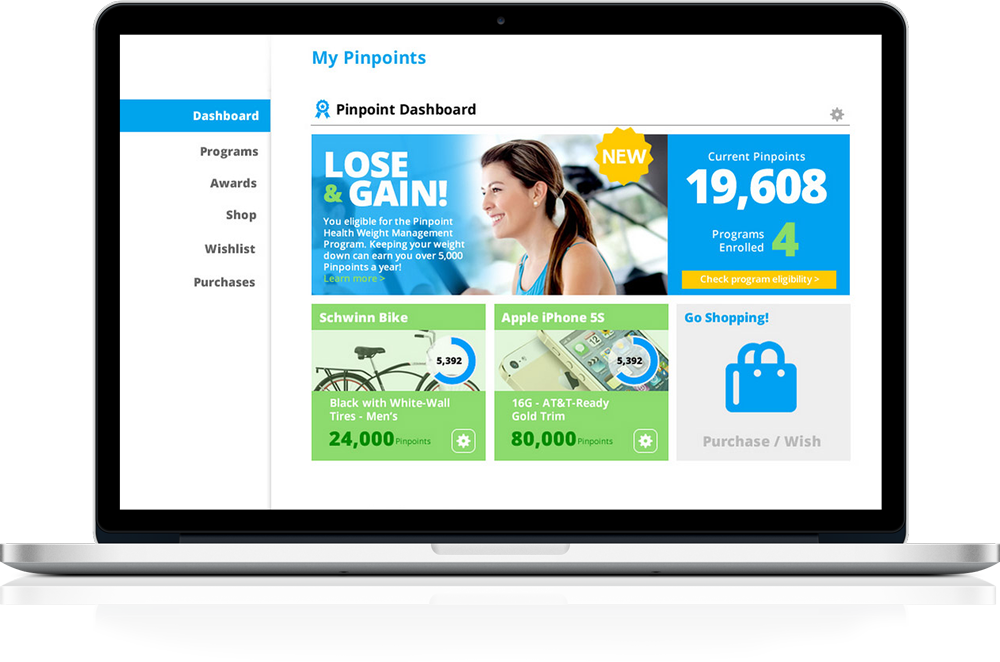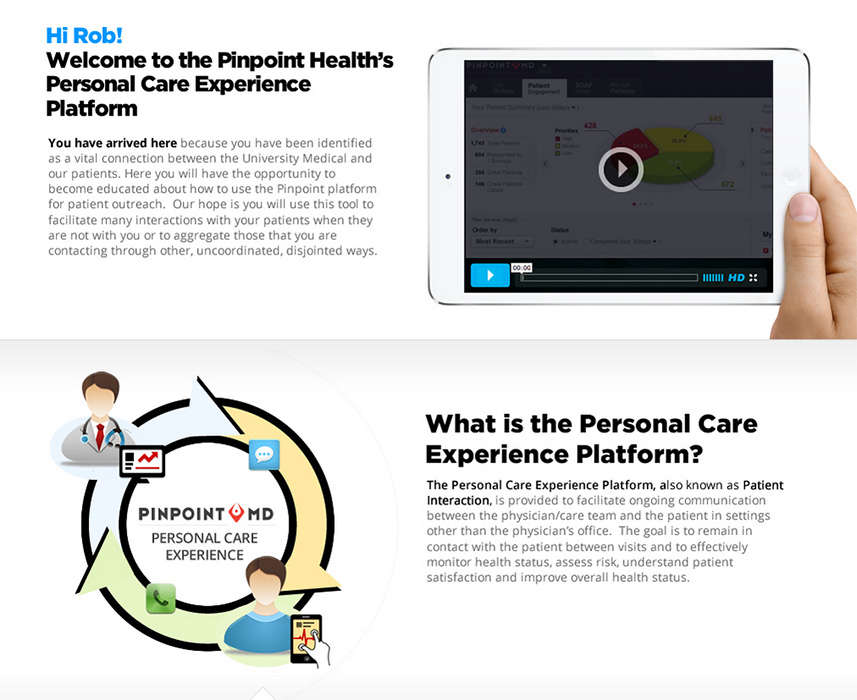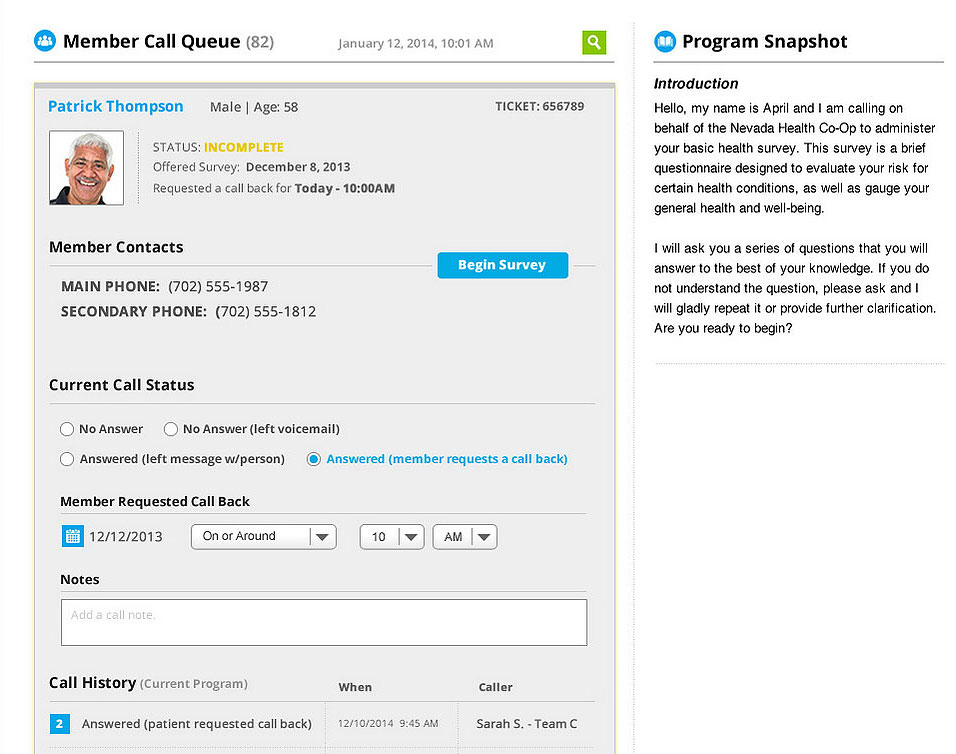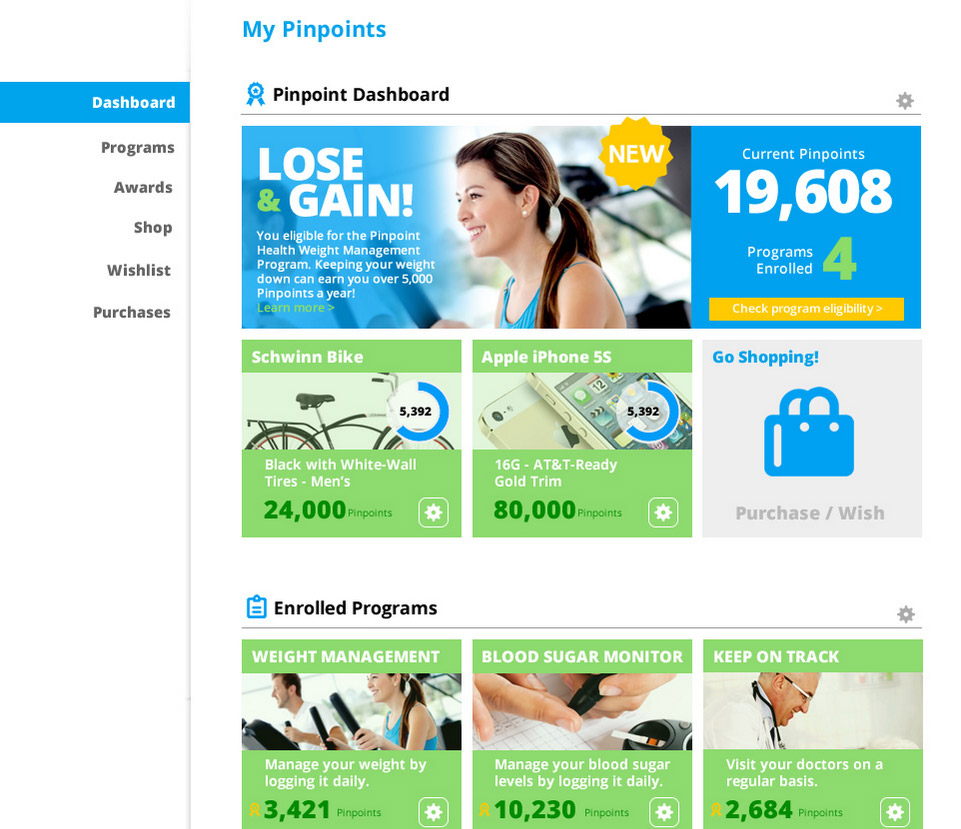Portfolio
PinpointCare: Population Health - "Connected Care"

Brief
Senior Experience Designer
Company
Pinpoint Health / PinpointCare
Date
2015
Saas - Responsive Web Application
Methodology
Mobile-First
Atomic Design
UX Project Lead
Design Team Lead
Usability Testing
Wireframes
Prototyping
High Resolution Design
Objective
Working with Mayo Clinic and Cleveland Health, we developed a platform that was driven by call center care representatives, but also had a patient-facing portal that shared all the data across both platforms.The idea seems simple; patients of Cleveland Clinic and Mayo Clinic are added to a program to monitor their chronic conditions (asthma, diabetes, etc.) and once a week they are SMS messaged a few questions one-at-a-time about their condition care for that week. Something like: "Have you used your rescue inhaler more than twice this week?". Their responses are scored, categorized, and logged. If they dip below a threshold or are trending downwards, a call center rep would be alerted in their system to make a preliminary call with the patient. The call center rep can sort their queue, set their outbound calls, see patient priorities based on urgency, and other filter types. The system can be shared by dozens of reps at once, and by managers to sort queues by representative teams. If after talking with the patient, they feel there is a regression or a lapse, they have the ability to schedule and connect the patient with physicians and specialists.
As a patient, they are incentivized by getting "Pinpoints" that they can spend on gift cards, and other items. They also can see their health trends, gain access to documentation based on their conditions and help systems for management.
WHY? - it's really quite simple. A patient on top of their conditions will visit urgent care or the emergency room less. There are far less dental emergencies across the United States because it's scheduled twice a year. Most people dislike visiting their dentist more than their doctor, yet they still go twice a year, simply because of mailers, check-ins and the dental association being more pro-active than reactive. Reactive care costs taxpayers, doctors, and most importantly, patients more than proactive care. It's not surprising that health care is the leading cause of personal debt in the United States.
Goals:
- Better patient care
- Data-driven, connected care
- Reactive system, for a proactive care process
- Non-intrusive patient "touches" with gamification
NOTE: I can't seem to find all the best screenshots from the design process, and final system. The below will have to do..


